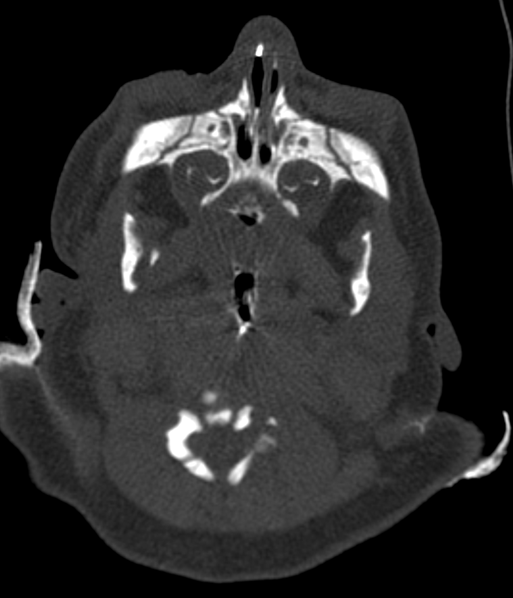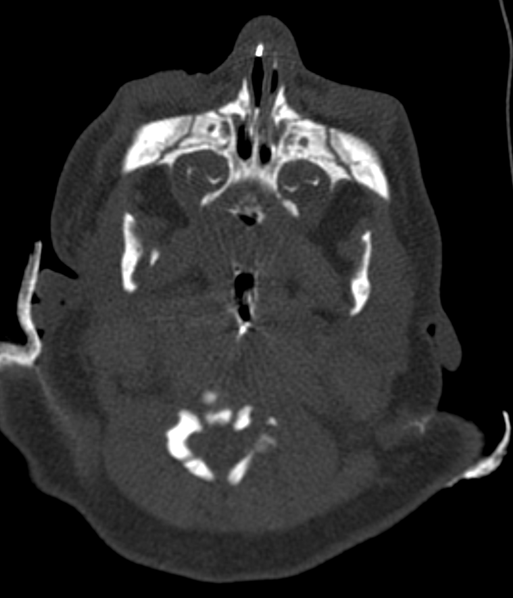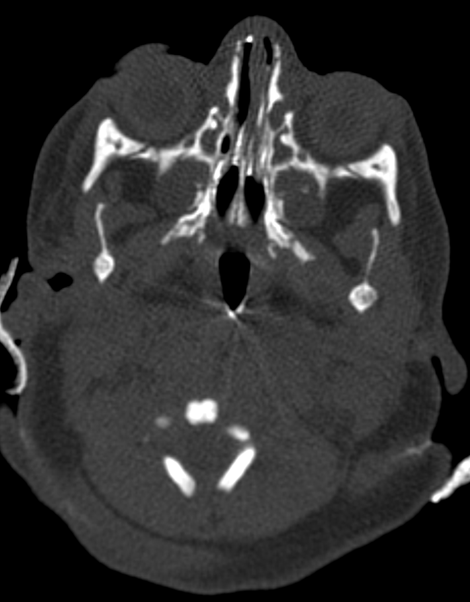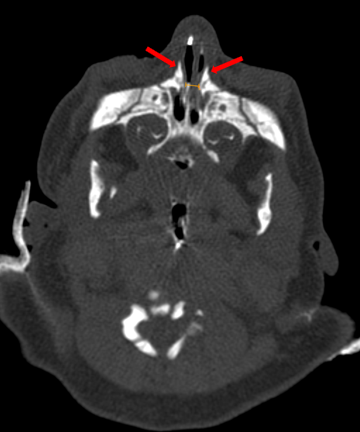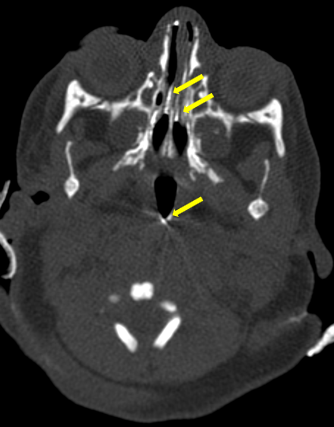A newborn term infant with difficulty in breathing
- Axial CT image at the level of maxilla demonstrate thickening and medial approximation of the nasal processes of the maxilla and inward bowing of the maxillary spines. There is significant narrowing of the nasal pyriform aperture (3.5 mm).
- Axial CT image at the level of orbits demonstrate positive contrast administrated through the nasal cavities seen extending into the nasopharynx suggesting absence of choanal atresia.
Diagnosis:
Congenital nasal pyriform aperture stenosis
Discussion:
- The pyriform aperture is the narrowest of nasal airway. It is bounded laterally by the nasal processes of the maxilla and inferiorly by the junction of the horizontal processes of the maxilla.

Schematic representation of the pyriform apertures. Image courtesy: http://www.ijri.org/text.asp?2010/20/4/266/73539 - Pyriform aperture stenosis is rare cause of nasal airway obstruction in newborns that results from early fusion and bony hypertrophy of the nasal processes of maxilla.
- Nasal airway obstruction in neonates commonly caused by posterior choanal atresia. It is important to differentiate these two entities as there are differences in management.
- Clinical presentation can be variable including respiratory distress at birth, cyclical cyanosis or difficulty in breathing during feeding.
- Diagnosis of the pyriform stenosis is can be made accurately by CT scan. In a term infant, each pyriform aperture width < 3 mm, or whole pyriform aperture width < 8 mm, confirms the diagnosis.
- It can occur in isolated from or in association with other congenital anomalies, like central mega incisor, holoprosencephaly, facial hemangiomas, clinodactyly and pituitary dysfunction.
- Mild forms are treated conservatively with use of topical nasal decongestants
- Severe cases may require surgical treatment
- Take home point: HRCT is the imaging modality of choice. Narrowing of the pyriform aperture measuring < 8 mm, confirms the diagnosis.
References:
- Thomas EM, Gibikote S, Panwar JS, Mathew J. Congenital nasal pyriform aperture stenosis: A rare cause of nasal airway obstruction in a neonate. Indian J Radiol Imaging 2010;20:266-8
- Rao A, Godehal SM, Patil AR, Mallarajapatna G, Nandikoor S, Hariharan M. Congenital nasal pyriform aperture stenosis: a rare cause of neonatal nasal airway obstruction. BJR Case Rep. 2015;1(1):20150006. Published 2015 Apr 20. doi:10.1259/bjrcr.20150006
Dr Surendra K L
DMRD, DNB, EDIR, FRCR
Junior Consultant Radiologist
Manipal Hospitals Radiology Group
Dr. Anita Nagadi
MD, MRCPCH, FRCR, CCT
Senior Consultant Radiology
Manipal Hospitals Radiology Group

